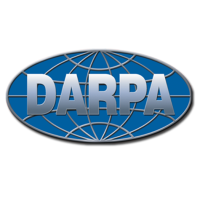Federal Agency Paying Millions to Develop Hacker Allies in High Schools

The U.S. Department of Defense is spending $10 million over the next three years to help high schoolers become better computer hackers, starting with 16 schools in California this fall.
Manufacturing Experimentation and Outreach (MENTOR) is being run by the Defense Advanced Research Projects Agency (DARPA), a unique government research organization that funds projects devoted to developing cutting edge technology related to national security. The program’s structure is modeled after “hackerspaces,” clubhouse-like groups that act as laboratories of experimentation for technology enthusiasts.
While MENTOR is aimed at developing the next generation of system designers and manufacturing innovators by exposing high school students to the principles of modern design and foundry-style digital manufacturing, some people are wondering about the wisdom of giving the military that kind of classroom presence.
“Having these programs in schools is fantastic, but the military calling the shots in American education?” Mitch Altman, a co-founder of Noisebridge, a San Francisco hackerspace, told the New York Times. “I don’t see that as a positive move.”
Altman echoed reservations by other critics who want to see additional resources for studying science and technology in schools, but would rather see them come from the Department of Education, not the military.
MENTOR is part of a larger umbrella of programs known as Adaptive Vehicle Make, whose main objective is to speed up development times for complex defense systems. DARPA―which was created in 1958 after the Soviet launch of Sputnik ignited an international military technology race―has helped to develop a number of inventions over the years, including the M-16 rifle, the Saturn rocket, global positioning systems and stealth technology.
But not all of DARPA’s outside-the-box ideas have been warmly embraced. A Terrorism Futures Market was quickly terminated in 2003 after criticism from Congress. Deputy Defense Secretary Paul Wolfowitz admitted that “maybe they got too imaginative,” but California Senator Barbara Boxer thought it might go a little deeper. “There is something very sick about it,” she said.
DARPA created a futures market trading website for the massive Total Information Awareness data mining program run by Retired Admiral John Poindexter, a former prominent player in the Iran-Contra scandal during the Reagan administration.
There are an estimated 200 hackerspaces in the country, full of budding engineers and computer scientists, and DARPA has reached out to them with millions of dollars in grants. But connection to high schoolers is new and one of the first lessons they will learn is that work done in a government program belongs to the government.
“DARPA desires to receive complete, fully functional algorithms, source code, documentation, binaries, and test use cases,” according to DARPA’s program description. “[And] Unlimited Rights to all deliverables . . . to enable their industry-wide promulgation in the course of and subsequent to this program.”
–Ken Broder
To Learn More:
Worries over Defense Department Money for “Hackerspaces” (by Amy O’Leary, New York Times)
MENTOR—The Manufacturing Experimenting and Outreach (Tactical Technology Office, DARPA)
DARPA, Hackerspaces, and Schools (by Al Jigong Billings, Open Buddha)
Pentagon Taps Students to Build Robots, Drones (by Andrew Becker, California Watch)
Manufacturing Experimentation and Outreach (MENTOR) (Federal Business Opportunities)
- Top Stories
- Controversies
- Where is the Money Going?
- California and the Nation
- Appointments and Resignations
- Unusual News
- Latest News
- California Forbids U.S. Immigration Agents from Pretending to be Police
- California Lawmakers Urged to Strip “Self-Dealing” Tax Board of Its Duties
- Big Oil’s Grip on California
- Santa Cruz Police See Homeland Security Betrayal in Use of Gang Roundup as Cover for Immigration Raid
- Oil Companies Face Deadline to Stop Polluting California Groundwater





